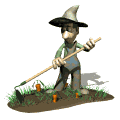Benjamin and Simeon's Allotment
Comments for Study 13
Joshua 18:1-20:9
Memory Verse: 3
SORRY, THE COMMENTARY FOR THIS BOOK HAS NOT BEEN STARTED.
CLICK HERE FOR A LIST OF BOOKS THAT ARE COMPLETED.
BEFORE READING PLEASE CLICK HERE TO ANSWER THE QUESTIONS.
BEFORE READING PLEASE CLICK HERE TO VIEW A MAP OF THE DIVISION OF CANAAN.
BEFORE READING PLEASE CLICK HERE TO VIEW A MAP OF THE UNITED KINGDOM OF ISRAEL.
BEFORE READING PLEASE CLICK HERE TO READ ABOUT ISRAEL'S HISTORY.
BEFORE READING PLEASE CLICK HERE FOR A LIST OF ISRAEL'S JUDGES.
I. How Long Will You Wait to Take Possession of the Land (18:1-10)
>1. Where did the Israelites gather and why? (1)
* Joshua 18:1 "The whole assembly of the Israelites gathered at Shiloh and set up the Tent of Meeting there. The country was brought under their control,"
* "Shiloh" -Shiloh is a place name perhaps meaning, “tranquil, secure.” About thirty miles north of Jerusalem sat the city which would be Israel's religious center for over a century after the conquest, being the home of Israel's tabernacle. Judges 21:19 described Shiloh's location as “on the north side of Bethel, on the east side of the highway that goeth up from Bethel to Shechem, and on the south of Lebonah.” Twelve miles south of Shechem, Shiloh was in a fertile plain at 2,000 feet elevation. This is apparently modern Seilun, where archaeologists have unearthed evidence of Canaanite settlement by 1700 B.C. Perhaps when Israel chose a spot for the tabernacle, Shiloh was available for Joshua to use as the place to allot land to the tribes. (Holman Bible Dictionary) See below for more information.
* "The country was brought under their control" -The area around Shiloh and the places that Israel settled in was under their control and the land was at peace.
* 1 Samuel 2:9-10 "Once when they had finished eating and drinking in Shiloh, Hannah stood up. Now Eli the priest was sitting on a chair by the doorpost of the LORD's temple. In bitterness of soul Hannah wept much and prayed to the LORD."
* 1 Samuel 2:9-10 states that later at Shiloh a temple was built which had doorposts. It says "doorpost of the LORD's temple" Concerning the temple at Shiloh. Tyndale Old testament Commentaries, Joyce G. Baldwin wrote, "The Temple of the Lord was built by Solomon in Jerusalem, as is well known, but the Old Testament provides no explanation of this temple at Shiloh, where the tent of meeting was set up after the conquest of Canaan (Jos. 18:1). Shiloh was the main sanctuary of the Israelites throughout the period of the judges (Jdg, 21:19), but when the wood-frame tent was replaced by a more permanent structure is not known. The word he~iil, 'temple', 'palace', presupposes a building. It is used of the holy place of Solomon's Temple, but not of the corresponding area of the tabernacle. Similarly, the words for 'door' and 'doorpost' (1 Sa. 1 :9; 3: 15) require a solid structure, and not merely a tent with movable curtain.
"Shiloh was the central shrine, because it housed the ark of the covenant, but it may not have been the only temple of the Lord in Israel during the judges period. The tribe of Dan is recorded as installing a centre for worship (Jdg. 18:30-31) at the city they renamed Dan; it was to be revived as a cultic centre by Jeroboam I, who also refurbished Bethel for worship (1 Ki. 12:28-29). Built at about the same time as Solomon's was the temple at Arad, the only excavated Israelite temple. Yohanan Aharoni is adamant:
"'There is no doubt that this is an Israelite temple in the full meaning of that word, a house of Yahweh in biblical terms, not just a shrine built in the Israelite period... In the various stages of excavation, there was not found even one object relating to idol worship... Furthermore, there were found in it some inscriptions with the names of known priestly families, such as Pashhur, Meremoth, and the sons of Korah. There is no doubt, therefore, that this is an Israelite temple.' *
"Its plan was different from that of the Jerusalem Temple in some important respects: it had only one room instead of two, and it was a broad room in contrast to the elongated structure of the Jerusalem Temple. A niche was formed in the long western wall by a recess, a sort of 'holy of holies', while a courtyard outside the long eastern wall contained the altar of sacrifice, constructed of earth and unhewn stone (Ex. 20:24-25). Small rooms round the courtyard would provide accommodation for the duty priests. Similar temples of the Canaanite period, with one broad room and a central niche, have been found also at Hazor, Lachish and Megiddo; it could well be, therefore, that the Shiloh shrine was of the same style, in keeping with the practice of the country.
"A building of this sort makes good sense of the references in 1 Samuel 1-3. Samuel slept within the temple, 'where the ark of God was', in its niche along the west wall, while Eli had his quarters somewhere in the rooms around the outer court. Plans of the Arad temple even show a bench seat each side of the door, such as Eli may have regularly used (1 Sa. 1:9).** All the sacrificial ritual and the preparation of the meat for the worshippers took place, of course, in the open courtyard.
"Danish excavators in the 1920s and 1930s failed to find evidence of the Shiloh temple. Excavation of Shiloh was resumed in 1981 as part of a regional study of the territory of Ephraim by Israeli scholars. They opened nine areas of excavation, some of them close to those of the earlier Danish expeditions. Since then, some important conclusions have been reached about the history of Shiloh, though it remainstrue that no trace of the temple there has come to light, probably because the highest point of the tell, where it was most likely to have been built, has been weathered to bedrock. Nevertheless, from the earliest levels of building onwards, objects used in worship have been found:
"'There are accumulating indications of cultic continuity at the site - from the Middle Bronze II period onward; that is, the sacral tradition at Shiloh long antedates the Israelites. A sanctuary probably stood here as early as the Middle Bronze Age [1650-1550 BC], and this may have been of central importance to the development of the site. Even after the destruction of the fortified Middle Bronze site... cultic activity continued in the late Bronze Age, despite the absence, as far as can be determined, of any real settlement... The history of Shiloh in the Middle and Late Bronze Ages helps us to understand why Shiloh was chosen as the first Israelite cultic centre.'***
"Surveys have shown that the territory of Ephraim was inhabited by only a small sedentary population just before the arrival of Israel; and in view of the fact that Shiloh was an old traditional site for worship, it was an obvious choice for the site of the tabernacle.
"Indications of the date when organization round the sanctuary at Shiloh began are gained from excavated buildings on the western side of the tell, which Israel Finkelstein takes to have been annexes to the cultic complex that stood farther up-hill. Storage vessels abound, indeed 'the Iron Age pottery of Shiloh is one of the richest accumulations of pottery finds at any early Israelite site'.**** These vessels may have been used to store offerings brought by worshippers to the sanctuary (1 Sa. 1:24). The building is dated c. 1200-1000 BC.
"Within a radius of three to four miles of Shiloh, twenty-two settlements have been found belonging to this period, a higher density of population than anywhere else in Ephraim so far discovered.
"Evidence of a dramatic destruction of the buildings at Shiloh abounds. The storage vessels mentioned above all bear marks of burning which are visible in Finkelstein's photograph. Charred raisms remained in one of the jars. The building which housed the pottery had collapsed in a fierce fire, dated about the middle of the eleventh century B.C., which would tie up with an attack by the Philistines, after their victory at Ebenezer. Though this event is not recorded in I Samuel, it was long remembered, and well served Jeremiah's purpose in warning about the imminent destruction of Jerusalem (Jeremiah 7:12; 26:6; cf. Psalms 78:60-64).
"* Y. Aharoni, TIu: Archaeology of the Land of Israel (London: 8eM Press, 1982),/. 229.
"** Ibi ., photograph 31, model of the reconstructed temple at Arad.1 I. Finkelstein,
"***Shiloh Yields Some, But Not All, of Its Secrets', BAR 12/1 (1986), p. 39.
"**** Ibid., p. 38, where a photograph shows eight different shapes of jar." This ends the Tyndale quote.
*
>What did they set up there? (19:51)
* "Tent of Meeting" -The tent of meeting is also called the tabernacle. It existed until a temple was built.
* Joshua 19:51 "These are the territories that Eleazar the priest, Joshua son of Nun and the heads of the tribal clans of Israel assigned by lot at Shiloh in the presence of the LORD at the entrance to the Tent of Meeting. And so they finished dividing the land."
* The tent of meeting and a more permanent building called the temple of the Lord existed at the same time at Shiloh.
*
>What eventually happened to the tent of meeting? (Deut. 12:11-14; and 2 Samuel 7:4-7; and 2 Chron. 6:18)
* The temple at Shiloh was not the Lord's will according to the Lord's will David.
* Deuteronomy 12:11-14 "Then to the place the LORD your God will choose as a dwelling for his Name--there you are to bring everything I command you: your burnt offerings and sacrifices, your tithes and special gifts, and all the choice possessions you have vowed to the LORD. And there rejoice before the LORD your God, you, your sons and daughters, your menservants and maidservants, and the Levites from your towns, who have no allotment or inheritance of their own. Be careful not to sacrifice your burnt offerings anywhere you please. Offer them only at the place the LORD will choose in one of your tribes, and there observe everything I command you."
* 1 Samuel 2:22 "Now Eli, who was very old, heard about everything his sons were doing to all Israel and how they slept with the women who served at the entrance to the Tent of Meeting."
* 1 Samuel 4:10-11 "So the Philistines fought, and the Israelites were defeated and every man fled to his tent. The slaughter was very great; Israel lost thirty thousand foot soldiers. The ark of God was captured, and Eli's two sons, Hophni and Phinehas, died."
* 2 Samuel 7:4-7 "That night the word of the LORD came to Nathan, saying: "Go and tell my servant David, 'This is what the LORD says: Are you the one to build me a house to dwell in? I have not dwelt in a house from the day I brought the Israelites up out of Egypt to this day. I have been moving from place to place with a tent as my dwelling. Wherever I have moved with all the Israelites, did I ever say to any of their rulers whom I commanded to shepherd my people Israel, "Why have you not built me a house of cedar?"'"
* 1 Samuel 14:2-3 "Saul was staying on the outskirts of Gibeah under a pomegranate tree in Migron. With him were about six hundred men, among whom was Ahijah, who was wearing an ephod. He was a son of Ichabod's brother Ahitub son of Phinehas, the son of Eli, the LORD's priest in Shiloh. No one was aware that Jonathan had left."
* 1 Kings 8:3-5 "When all the elders of Israel had arrived, the priests took up the ark, and they brought up the ark of the LORD and the Tent of Meeting and all the sacred furnishings in it. The priests and Levites carried them up, and King Solomon and the entire assembly of Israel that had gathered about him were before the ark, sacrificing so many sheep and cattle that they could not be recorded or counted."
* 1 Chronicles 6:31-32 "These are the men David put in charge of the music in the house of the LORD after the ark came to rest there. They ministered with music before the tabernacle, the Tent of Meeting, until Solomon built the temple of the LORD in Jerusalem. They performed their duties according to the regulations laid down for them."
* 2 Chronicles 6:18 "But will God really dwell on earth with men? The heavens, even the highest heavens, cannot contain you. How much less this temple I have built!"
*
*
>2. Now that some of land was won what problem remained? (2)
* Joshua 18:2 "but there were still seven Israelite tribes who had not yet received their inheritance."
*
*
*
*
>How did Joshua challenge them? (3)
* Joshua 18:3 "So Joshua said to the Israelites: "How long will you wait before you begin to take possession of the land that the LORD, the God of your fathers, has given you?"
*
*
*
*
*
>what did he tell them to do? (4)
* Joshua 18:4 "Appoint three men from each tribe. I will send them out to make a survey of the land and to write a description of it, according to the inheritance of each. Then they will return to me."
*
*
*
*
*
>3. How many parts was the new land to be divided into? (5-6)
* Joshua 18:5-6 "You are to divide the land into seven parts. Judah is to remain in its territory on the south and the house of Joseph in its territory on the north. After you have written descriptions of the seven parts of the land, bring them here to me and I will cast lots for you in the presence of the LORD our God."
*
*
*
*
>Who was not to get the new land?
* Joshua 18:7 "The Levites, however, do not get a portion among you, because the priestly service of the LORD is their inheritance. And Gad, Reuben and the half-tribe of Manasseh have already received their inheritance on the east side of the Jordan. Moses the servant of the LORD gave it to them."
*
*
*
*
*
>4. What does it mean to cast lots? (8)
* Joshua 18:8 "As the men started on their way to map out the land, Joshua instructed them, "Go and make a survey of the land and write a description of it. Then return to me, and I will cast lots for you here at Shiloh in the presence of the LORD."
*
*
*
*
>What does it mean "in the presence of the Lord? (9-10)
* Joshua 18:9-10 "So the men left and went through the land. They wrote its description on a scroll, town by town, in seven parts, and returned to Joshua in the camp at Shiloh. Joshua then cast lots for them in Shiloh in the presence of the LORD, and there he distributed the land to the Israelites according to their tribal divisions."
*
*
*
*
*
>How can we know the will of the Lord? (Rom. 12:1-2; and 1 Cor. 6:19-20)
* 1 Corinthians 6:19-20 "Do you not know that your body is a temple of the Holy Spirit, who is in you, whom you have received from God? You are not your own; you were bought at a price. Therefore honor God with your body."
* Romans 12:1-2 "Therefore, I urge you, brothers, in view of God's mercy, to offer your bodies as living sacrifices, holy and pleasing to God--this is your spiritual act of worship. Do not conform any longer to the pattern of this world, but be transformed by the renewing of your mind. Then you will be able to test and approve what God's will is--his good, pleasing and perfect will."
*
*
II. Benjamin's Allotment (18:11-28)
>5. Where did Benjamin's territory lie? (1)
* Joshua 18:11 "The lot came up for the tribe of Benjamin, clan by clan. Their allotted territory lay between the tribes of Judah and Joseph:"
*
*
*
*
>What had Jacob said about him? (Gen. 49:27)
* Genesis 49:27 "Benjamin is a ravenous wolf; in the morning he devours the prey, in the evening he divides the plunder."
*
*
*
*
>6. What was the land like? See a map.
* Joshua 18:12-28 "On the north side their boundary began at the Jordan, passed the northern slope of Jericho and headed west into the hill country, coming out at the desert of Beth Aven.
13 From there it crossed to the south slope of Luz (that is, Bethel) and went down to Ataroth Addar on the hill south of Lower Beth Horon.
14 From the hill facing Beth Horon on the south the boundary turned south along the western side and came out at Kiriath Baal (that is, Kiriath Jearim), a town of the people of Judah. This was the western side.
15 The southern side began at the outskirts of Kiriath Jearim on the west, and the boundary came out at the spring of the waters of Nephtoah.
16 The boundary went down to the foot of the hill facing the Valley of Ben Hinnom, north of the Valley of Rephaim. It continued down the Hinnom Valley along the southern slope of the Jebusite city and so to En Rogel.
17 It then curved north, went to En Shemesh, continued to Geliloth, which faces the Pass of Adummim, and ran down to the Stone of Bohan son of Reuben.
18 It continued to the northern slope of Beth Arabah and on down into the Arabah.
19 It then went to the northern slope of Beth Hoglah and came out at the northern bay of the Salt Sea, at the mouth of the Jordan in the south. This was the southern boundary.
20 The Jordan formed the boundary on the eastern side. These were the boundaries that marked out the inheritance of the clans of Benjamin on all sides."
21 The tribe of Benjamin, clan by clan, had the following cities: Jericho, Beth Hoglah, Emek Keziz,
22 Beth Arabah, Zemaraim, Bethel,
23 Avvim, Parah, Ophrah,
24 Kephar Ammoni, Ophni and Geba--twelve towns and their villages.
25 Gibeon, Ramah, Beeroth,
26 Mizpah, Kephirah, Mozah,
27 Rekem, Irpeel, Taralah,
28 Zelah, Haeleph, the Jebusite city (that is, Jerusalem), Gibeah and Kiriath--fourteen towns and their villages. This was the inheritance of Benjamin for its clans."
*
*
*
*
*
III. Simeon's Allotment (19:1-9)
>7. How was Simeon's allotment different than the rest? (1-2, 9)
* Joshua 19:1-2 "The second lot came out for the tribe of Simeon, clan by clan. Their inheritance lay within the territory of Judah. It included: Beersheba (or Sheba), Moladah,"
* Joshua 19:9 "The inheritance of the Simeonites was taken from the share of Judah, because Judah's portion was more than they needed. So the Simeonites received their inheritance within the territory of Judah."
*
*
*
>How was this fulfilment of Jacob's prophecy? (Gen. 34:30, 49:5-7)
* Genesis 34:30 "Then Jacob said to Simeon and Levi, "You have brought trouble on me by making me a stench to the Canaanites and Perizzites, the people living in this land. We are few in number, and if they join forces against me and attack me, I and my household will be destroyed."
* Genesis 49:5-7 "Simeon and Levi are brothers-- their swords are weapons of violence. Let me not enter their council, let me not join their assembly, for they have killed men in their anger and hamstrung oxen as they pleased. Cursed be their anger, so fierce, and their fury, so cruel! I will scatter them in Jacob and disperse them in Israel."
*
*
*
*
>How did Simeon decrease over the generations? (Num. 1:22-23, 26:12-14; and 1 Chron. 12:23-37; and 2 Chron. 34:6)
* Numbers 1:22-23 "From the descendants of Simeon: All the men twenty years old or more who were able to serve in the army were counted and listed by name, one by one, according to the records of their clans and families. The number from the tribe of Simeon was 59,300."
* Numbers 26:12-14 "The descendants of Simeon by their clans were: through Nemuel, the Nemuelite clan; through Jamin, the Jaminite clan; through Jakin, the Jakinite clan; through Zerah, the Zerahite clan; through Shaul, the Shaulite clan. These were the clans of Simeon; there were 22,200 men."
* 1 Chronicles 12:23-37 "These are the numbers of the men armed for battle who came to David at Hebron to turn Saul's kingdom over to him, as the LORD had said: men of Judah, carrying shield and spear--6,800 armed for battle; men of Simeon, warriors ready for battle--7,100; men of Levi--4,600, including Jehoiada, leader of the family of Aaron, with 3,700 men, and Zadok, a brave young warrior, with 22 officers from his family; men of Benjamin, Saul's kinsmen--3,000, most of whom had remained loyal to Saul's house until then; men of Ephraim, brave warriors, famous in their own clans--20,800; men of half the tribe of Manasseh, designated by name to come and make David king--18,000; men of Issachar, who understood the times and knew what Israel should do--200 chiefs, with all their relatives under their command; men of Zebulun, experienced soldiers prepared for battle with every type of weapon, to help David with undivided loyalty--50,000; men of Naphtali--1,000 officers, together with 37,000 men carrying shields and spears; men of Dan, ready for battle--28,600; men of Asher, experienced soldiers prepared for battle--40,000; and from east of the Jordan, men of Reuben, Gad and the half-tribe of Manasseh, armed with every type of weapon--120,000."
* 2 Chronicles 34:6 "In the towns of Manasseh, Ephraim and Simeon, as far as Naphtali, and in the ruins around them,"
* The tribe of Simeon slowly decreased of the generations. Even though when David first reigned in Hebron, their back door the amount of men that went to David was one of the smallest. By the time of Josiah's reign little were left and much of the area is described as having ruins. Simeon was often invaded by Edom, the Philistines, and other surrounding peoples.
*
>What can be learned about the character that the Lord desires? (Matt. 5:9)
* Matthew 5:9 "Blessed are the peacemakers, for they will be called sons of God."
*
*
*
>8. What was the land of Simeon like? See a map.
* Joshua 19:3-8 "Hazar Shual, Balah, Ezem, Eltolad, Bethul, Hormah, Ziklag, Beth Marcaboth, Hazar Susah, Beth Lebaoth and Sharuhen--thirteen towns and their villages; Ain, Rimmon, Ether and Ashan--four towns and their villages-- and all the villages around these towns as far as Baalath Beer (Ramah in the Negev). This was the inheritance of the tribe of the Simeonites, clan by clan."
*
*
*
*

|

















